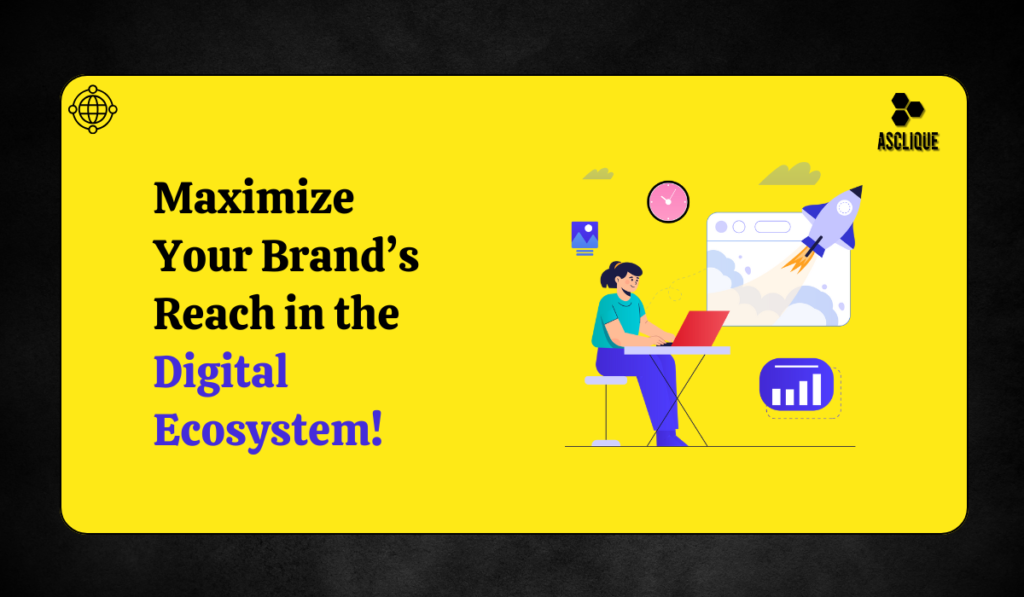The Digital Marketing Ecosystem is very important in the modern world-being digital, first-to-have a strong web presence. An ecosystem represents interconnected channels and strategies that enable brands to connect with their audience and drive growth and generate brand loyalty. Let’s find out what this digital marketing ecosystem is all about, why it matters, and the steps to build a powerful, interconnected presence online.
What is the Digital Marketing Ecosystem?
A Digital Marketing Ecosystem is an integration of different digital constituents, such as a website, SEO, social media, email marketing, and paid advertising, which combine and work towards promoting the brand, reaching audiences, and achieving business goals. All these elements play a different function, but it adds up to be a singular, cohesive experience for your audience.
Why the Digital Marketing Ecosystem Matters for Brand Growth
A strong digital marketing ecosystem enables your brand to connect with audiences through multichannel touchpoints. When channels are brought under one roof, they integrate recognition, customer engagement, and conversion rates. And research shows that brands can increase their customer retention rates by 33% when messaging stays consistent across channels.
Steps to Build a Strong Digital Marketing Ecosystem
Here are the essential steps in making a healthy, strong digital marketing ecosystem to maximize brand growth:
Step 1: Establish a Solid Website and Content Hub
Your website is a digital storefront for your brand and the heart of your ecosystem. It needs to be visually appealing, mobile-friendly, and full of value so that visitors are drawn in. You could consider your website as a content hub with blog posts, product information, and service offerings for potential customers to read.
Step 2: Optimize for Search Engines (SEO Essentials)
Ensure search engine optimization for your web presence and its content. Then, the keywords, and image optimizations, and high site speed will increase ratings. Actually, 75% of users never make to their second page of search. A good optimization for SEO improves more visibility.
Step 3: Harness the Power of Social Media Marketing
Facebook, Instagram, LinkedIn, and Twitter are very crucial in reaching your audience, sharing content, and building brand loyalty. A brand can establish a solid social presence that complements other ecosystem components by posting consistently, engaging with followers, and monitoring trends.
Step 4: Utilize Paid Advertising for Targeted Reach
Paid ads on Google, Facebook, and Instagram will immediately put your brand in front of the masses. With paid advertising, you quickly target specific demographics and go directly to the buyer. It is especially valuable for increasing brand awareness and driving traffic to one’s website or content hub.
Step 5: Develop an Email Marketing Strategy
One of the best lead nurturing tools or engagement tools is through email marketing to your current customers, as you may remain front of mind by means of personal newsletters, promotions, and content updates via the same channel. It offers one of the highest ROIs, standing at about $42 earned for each $1 spent, claims HubSpot.
Step 6: Track and Analyze Performance Metrics
You can keep track of how effective each piece of the Digital Marketing Ecosystem will be using analytics tools such as Google Analytics, where key performance indicators on website traffic, click-through rates, conversion rates, and all social media engagements can determine what is working and hence adjust your strategy.
Quick Stats: Data-driven companies are 23 times more likely to acquire customers, and analytics is the foundation of any successful digital marketing strategy.
Tracking Success in Your Digital Marketing Ecosystem
Analytics help you determine the success of your Digital Marketing Ecosystem. With Google Analytics, social media insights, and email marketing reports, you get deep data on what works with your audience. Analyzing these insights will help refine strategies, improve engagement, and maximize conversions.
Challenges in a Digital Marketing Ecosystem
It can be challenging to build and maintain a Digital Marketing Ecosystem. The management of multiple channels, consistent messaging, and keeping up with the curve of ever-changing digital trends can all become complicated issues. In fact, measuring success across platforms is complicated without a unified tracking system. It helps to regularly revisit your strategies and update your tools to help overcome these challenges and keep your ecosystem aligned.
Conclusion
A well-crafted digital marketing ecosystem is the simple foundation for any brand striving to thrive online. Thinking through each component when putting together a website, an SEO strategy, social media, email, and paying for ads will bring forward a seamless, engaging experience to your audience. But through strategy and data-driven execution, your ecosystem should start to evolve and ensure long-term growth.
FAQ’s
What is a Digital Marketing Ecosystem?
A Digital Marketing Ecosystem is an interaction of different digital channels and strategies that collaborate and work to promote a brand online.
What is a digital marketing ecosystem overview?
A digital marketing ecosystem overview gives an overview of different elements that interact with a brand’s digital marketing strategy, website, SEO, content marketing, social media, email, and paid advertising.
What is digital ecosystem marketing strategy?
The marketing strategy of a digital ecosystem is the planned integration of diverse digital channels and tools, enhancing brand visibility, engaging customers, and ultimately bringing about overall effectiveness in the marketing process.
Why is a Digital Marketing Ecosystem important?
This creates consistent brand messaging, maximizes audience engagement, and improves customer retention through integrated experiences across different platforms.

